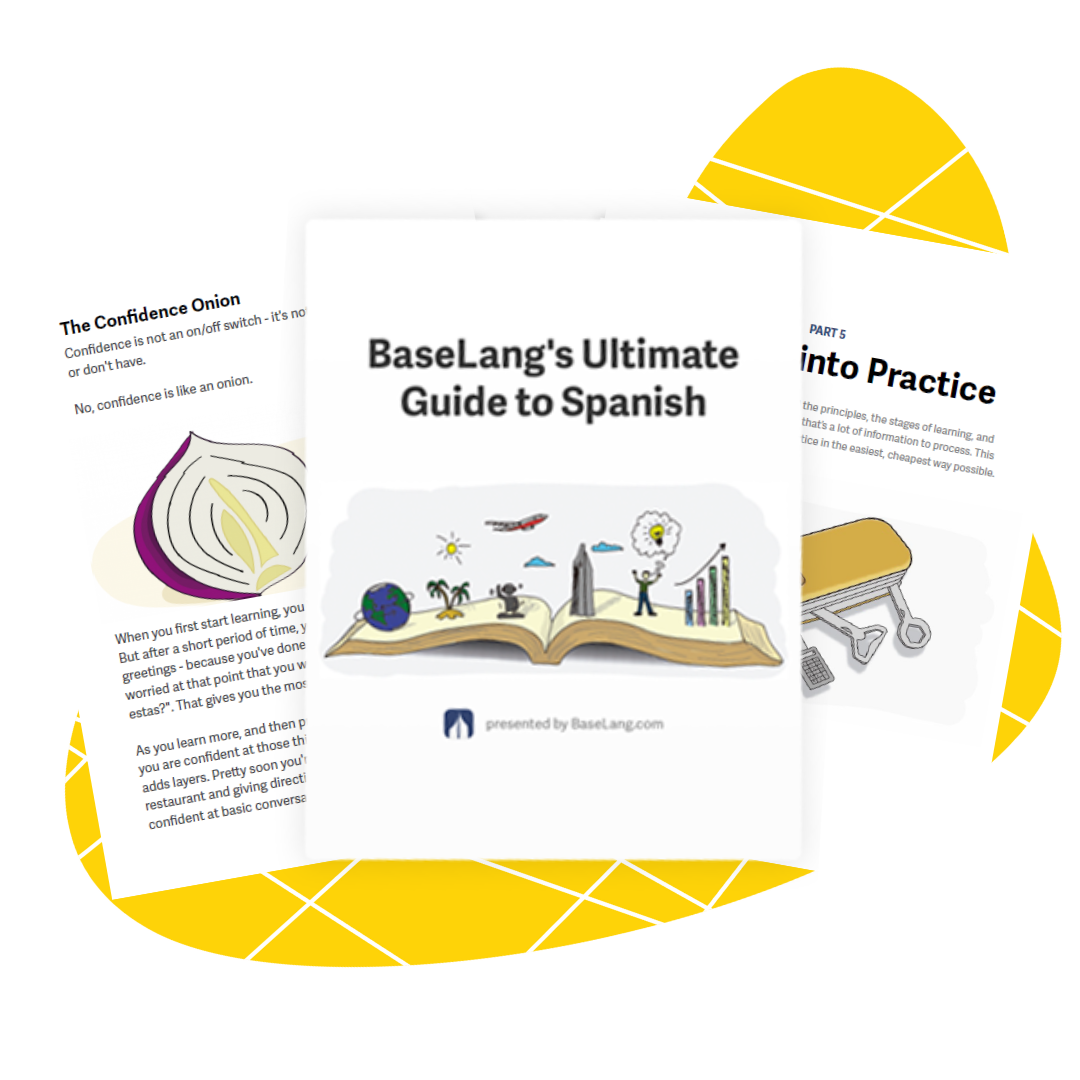Cuyo and Cuanto: Understanding Relative Adjectives in Spanish

Get our free email course, Shortcut to Conversational.
Have conversations faster, understand people when they speak fast, and other tested tips to learn faster.
More infoWhen learning Spanish, mastering the various parts of speech is essential for building a strong grammatical foundation. The relative adjectives in Spanish are among the lesser-known yet important grammatical elements in the language.
In today’s lesson we’ll see what the Spanish relative adjectives are, we’ll see their different forms, and we’ll learn how to use them in sentences. Our focus is on the two relative adjectives in Spanish: cuyo and cuanto.
What are Relative Adjectives?
Relative adjectives, also known as relative determiners, are words used to introduce a character or concept that is identified elsewhere in the sentence. Unlike relative pronouns, which replace nouns, relative adjectives describe or modify nouns. Thus, they refer to specific nouns and establish a relationship with other elements in the sentence.
There are two relative adjectives in Spanish: cuyo and cuanto.
Cuyo
Cuyo is the Spanish equivalent of the English word whose. It is used to indicate possession, and must agree in gender and number with the noun it modifies. Here are the four forms of cuyo in Spanish:
| Masculine | Feminine | |
| Singular | cuyo | cuya |
| Plural | cuyos | cuyas |
Now let’s see a few examples of how to use cuyo in Spanish:
- La casa cuyo dueño es famoso queda en esta calle. – The house whose owner is famous is in this street.
- Tomó el libro cuya portada era roja. – He picked up the book whose cover was red.
- El niño cuyos padres trabajan aquí es muy respetuoso. – The boy whose parents work here is very respectful.
- Me gustan las personas cuyas historias son interesantes. – I like people whose stories are interesting.
Did you take note of which noun’s gender and number is reflected in the form of cuyo we need to use? We’ve highlighted these nouns in italics. Our Spanish relative adjective in each example doesn’t modify the subject of the sentence, but rather the other noun, establishing a clear relationship between it and the subject.
Cuanto
Cuanto is used as a relative adjective to express the idea of as much or as many of something.
Like cuyo, it must agree in gender and number with the noun it modifies. Here are the four possible forms of the relative adjective cuanto in Spanish:
| Masculine | Feminine | |
| Singular | cuanto | cuanta |
| Plural | cuantos | cuantas |
Let’s see some examples to see how the Spanish relative pronoun cuanto works. As we did above, we’re italicizing the noun that the relative pronoun modifies:
- Toma cuanto dinero puedas y vete de aquí. – Take as much money as you can and get out of here.
- Con María compraremos cuanta ropa podamos durante esta temporada. – With Maria we’ll buy as many clothes as we can this season.
- Llamaremos a cuantos clientes podamos en 6 horas. – We’ll call as many customers as we can in 6 hours.
- Estamos jugando a tomar cuantas cosas podamos en una sola mano. – We’re playing a game of taking as many things as we can in one hand.
Keep in mind that what we’re seeing here is the use of cuanto as a relative adjective in Spanish. Cuanto also has a couple of other grammatical uses that we cover in our post on cuanto in Spanish. The accented word cuánto also has a similar appearance, but is a Spanish question word meaning how much or how many.
Conclusion: Relative adjectives in Spanish
Great job! Today’s post on relative adjectives was short and sweet, giving the basics on how and when to use them.
We saw that the two relative adjectives in Spanish are cuyo and cuanto, both of which have four forms to match the gender and number of the nouns they modify.
Cuyo translates directly as whose in English, and is used to establish a clear relationship between two nouns in a sentence.
Cuanto is used with nouns to describe as much or as many of them, linking this quantity of the noun back to the main subject and action of the sentence. This use of cuanto is distinct from other grammatical uses of the word, and also from the question word cuánto.
Now that you’re familiar with how to use cuyo and cuanto, you can provide more precise and detailed information about nouns with these relative adjectives in Spanish!



